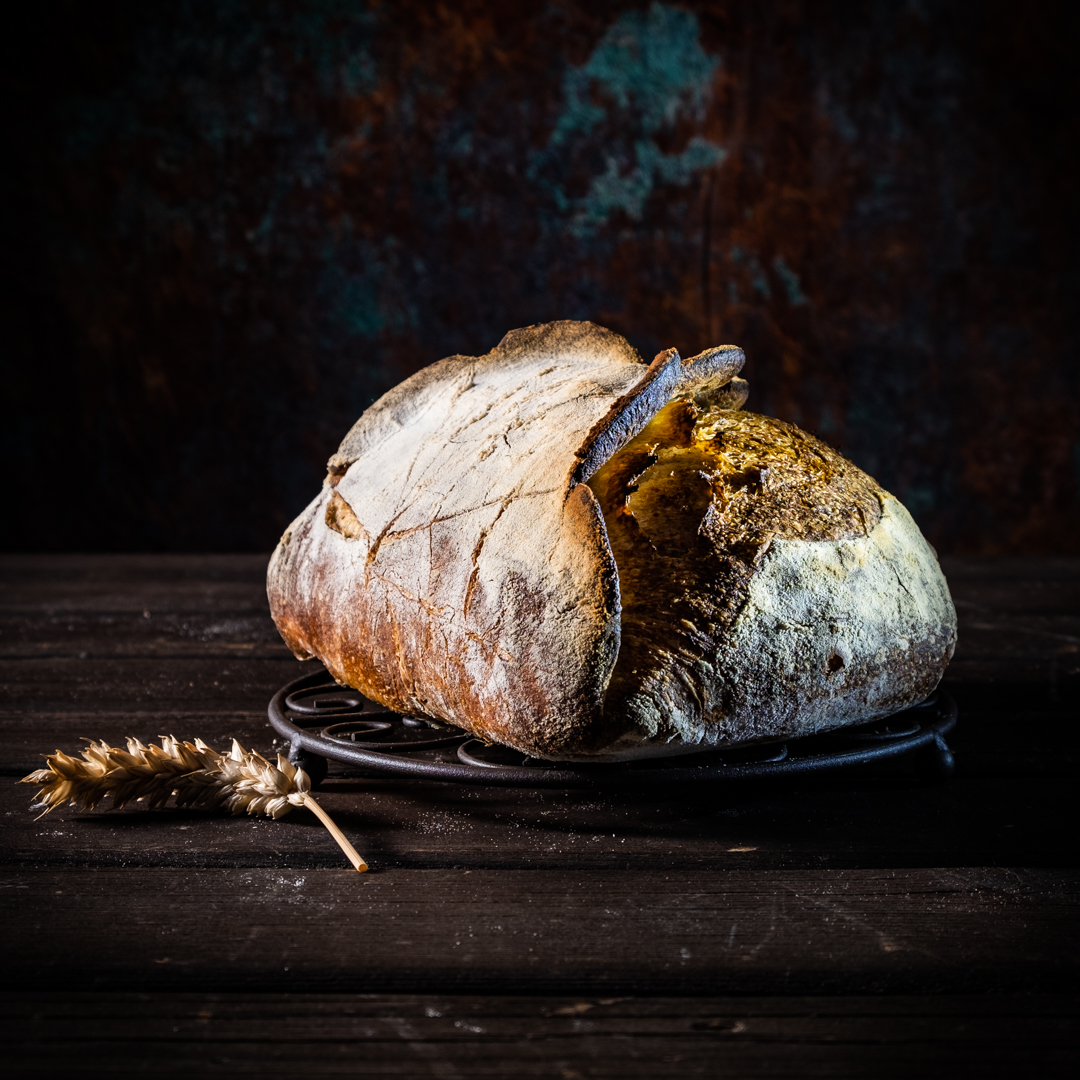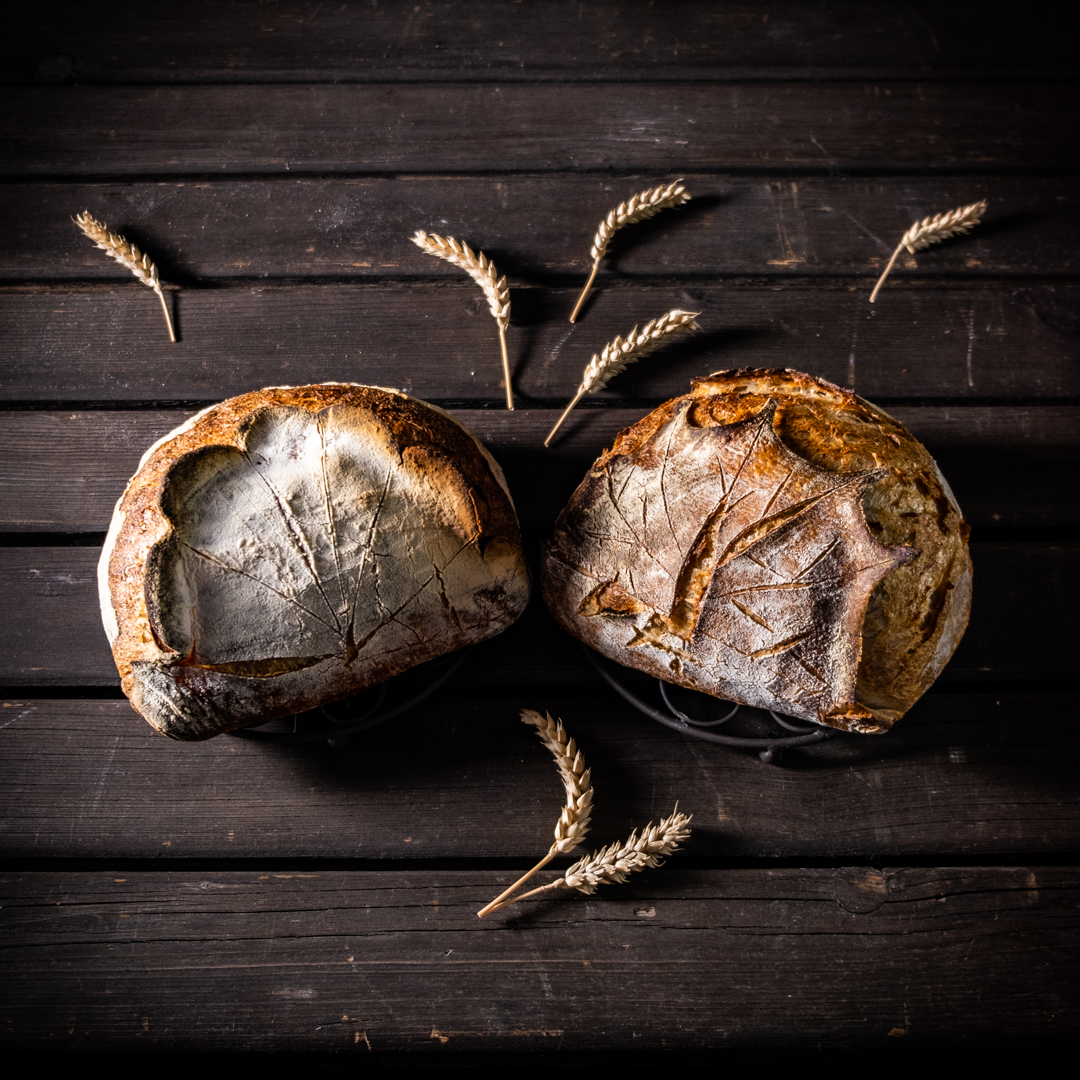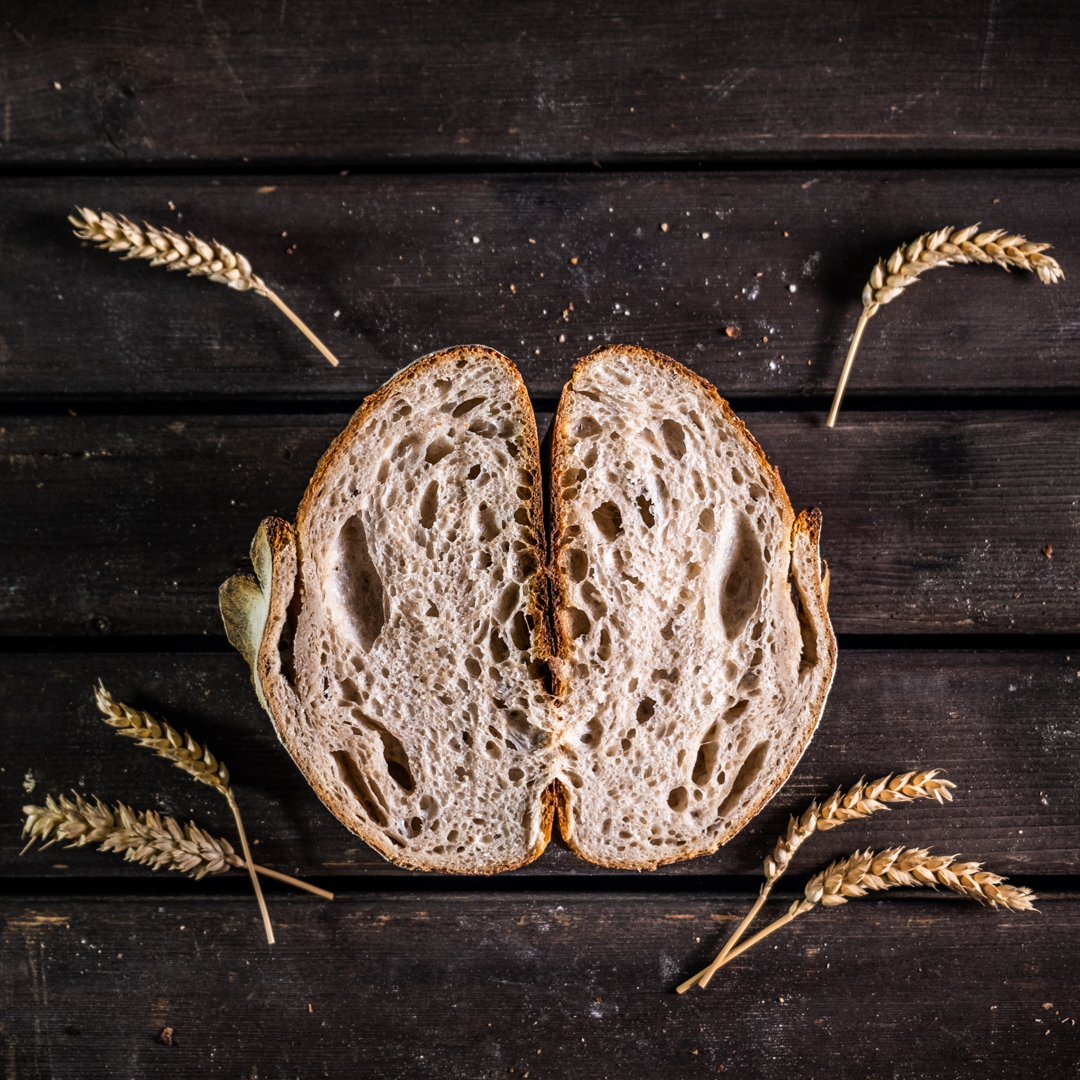
There is nothing fancy about the recipe for this bread, but its shape is definitely one to remember. French bakers are very creative with how their loaves look like. La Tabatiere is a French regional bread from the East of the country. There are dozens of French regional and traditional varieties of bread. One is more beautiful than the other although some of them are probably less practical to cut and eat. I am tempted to try more French bread shapes in the future but for the moment let's look at this one.
This is a classic 65% hydration loaf. The hydration needs to be kept low so it makes it easy to create the specific shape. Usually, this type of bread is baked either only from bread flour or, with some inclusions of rye or whole wheat flour. Also, very common is to make this bread with yeast or with sourdough+yeast to speed up the process.

Ingredients:
- 765g strong wheat flour (14% proteins)
- 100g whole rye flour
- 532g water (lukewarm)
- 175g sourdough starter (100% hydration)
- 20g salt
For the method, this is a loaf to do in one day. Bulk fermentation at desired dough temperature 26ºC for 8 hours. I shaped the dough when it reached a 100% increase. I did a final fermentation of 1 hour and my dough had 125% volume increase before the baking.

The challenge of this bread is to get the flap to rise nicely in the oven. First of all, the flap doesn't have to stick to the main dough and that's why I brushed it with oil on the borders. Also, I found that retarding the loaves in the fridge doesn't help with this either. The flap doesn't have to be stretch very thin otherwise it doesn't rise but behaves more like skin.
For the scoring, well there is no scoring... it is rather scratching, otherwise the dough opens through the little decorations instead of rising the flap. The dough opens itself at the base of the flap as there is the weakest point.

Here I have the full making video of this bread:
Cool. I read about several regional bread shapes including this one. Fun project.
French regional bread is impressive. We are chasing nowadays high protein flour and great open crumb. Many French breads do not target this, they strike by their shapes. They use medium to low protein flour, low hydrations and they have a closed crumb. Some are even having a very unpractical shape to slice but they look and taste amazing.
Well said.
Too often I see it written or repeated rote that you need 13% or stronger flour to bake good bread. What nonsense. The way I see it, the regional differences in flour types and strengths coupled with local climate and the inherited mechanisms of milling and baking (the grinding wheels, preparation tools and oven types, etc . . .) as well as the availability of ovens full stop all contribute to the signature styles that have grown into unique and wonderful breads.
Many regional areas of France and Italy, for example, bake traditionally large, thick-crusted loaves because they did not have ovens for home baking and instead used a communal oven or dedicated village baker once or twice a week and so the bread had to be made large to and 'strong' to last and keep until the next baking day.
Comapre that to middle-eastern and levantine breads where there would be multiple small bakers throughout a city so residents could bake - or buy - their bread as frequently as every day. You also have the history of older khorosan and emmer wheat varieties which do not provide much gluten for rising. The result? Traditional breads that are small and flattish in size and don't keep well beyond a day.
Go to northern Europe and the poor and short growing conditions mean that, even if frequent baking was convenient, the availability of the crop just wasn't there and what did grow acceptably was generally rye and barley so you have lots of very dense, darker breads. In some areas, bread might be baked even less regularly that in Europe - perhaps as infrequently as once a month. One outcome was the development of the various dark crispbreads so common across the area.
Or breads of the sub-continent. Their flour is not fantastic for artisan sourdough breads but the style that emerged saw low-to-medium protein flours milled to a high level of starch damage that makes them perfect for all the many flat breads the region is full of and without which the world would be a significantly less delicious place! Consider that, to this day, most Indian homes won't have a built-in oven as the rest of us know them as roasting and baking are simply not part of the inherited tools of their culinary traditions.
And so on.
Any time I find myself jealous of the fact that, in the US, the average bag of bog-standard flour off the shelf is as strong as our specialty 'bread' flour here in Australia, I have to take a step back and remind myself that the flour I do have at my disposal and the temperature ranges I experience lend themselves naturally to their own type of breads which are every bit as valid as any others which, after all, were just the product of the materials and enrionment in those places at those times.
(Also, I've found that, while I am not going to challenging those in the US on high-rising 14% protein loaves, our normal flour on the supermarket shelf makes a perfectly good baguette without having to mess around trying to increase either extensibility or strength.)
Dan, I think I couldn't write it better than you did. I personally baked for years with supermarket flour on which package was written 10% proteins. This is all-purpose flour for many. Did I bake fantastic looking loaves? Maybe rarely. Did I bake fantastic tasty bread? Always! Yes, my loaves were sometimes flat, sometimes dense, sometimes ugly but I have never thrown away a loaf. In my challenge to learn more, I noticed the influence of higher gluten % in the flour. And as I was lacking a good source of strong flour I added gluten powder. The difference was huge. Then, I had the luck to find Italian flours at 13%-14% proteins and the results were even better. But this is only for the visual part in my opinion. A great loaf it is not necessarily open crumb. A great loaf has a taste, texture, aroma that your mind will get crazy about. Eyes count too, but it is not the same. The true challenge that I will run in the future will be to bake bread with local organic flour that usually is ~11% proteins and get the best out of it in terms of all (taste, aroma, texture and look). I still need to practice and learn more about it and this competition with myself keeps me so motivated.
To your notes on bread cultures, I would like to add some from my home country, Romania. Once, wheat flour was like gold. Poor people had access only to corn and they were not baking bread but making polenta. Later when wheat was more accessible they baked bread in an interesting way. They were collecting the foam of grapes juice and mix it with some whole wheat and corn. They were making small buns that they were drying in the sun and stored them in the attics for the winter bakes. They rarely owned ovens so they were baking straight over embers on top of which they were putting a big terra-cotta bell. Yes, the loaves were burned on the bottom, they were removing the burning part and eat them. Were they good? I bet they could compete with many open crumb bread in terms of taste.
Look also at the Polaine bread... they are big dense loaves and though so popular in the entire world. There is a good reason for that, they know how to take out the best of the French flours.
I have big respect for all these bread cultures, be it a dense, flat or open crumb. I do not cope instead at all with supermarket bread made with sugar and dozens of additives introduced only for speeding up production time. There, my respect stops... those are non-food to me.
Not only are the loaves just beautiful like art, the production values of your video are incredible. Thanks for sharing the detailed processes the led to the baking of your gorgeous loaves.
Benny
I try to share a great passion here and when the things come from the heart, they get another dimension. Thank you so much Benny, very much appreciated especially when it comes from a baker who is also driven by his passion!